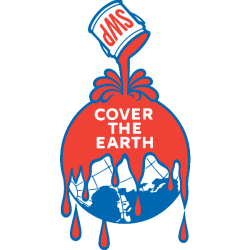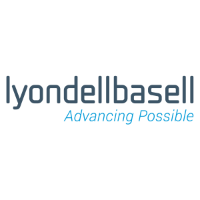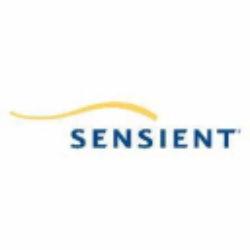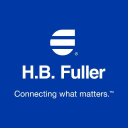EMN
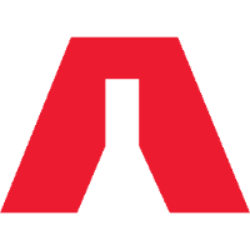
Eastman Chemical Company
EMN
(1.8)88,92 USD
8.64% ROA
15.89% ROE
14.38x PER
12.652.432.200,00 USD
89.44% DER
2.99% Yield
9.48% NPM
Eastman Chemical Company Stock Analysis
Eastman Chemical Company Fundamental Analysis
Fundamental analysis in stock investing is like studying the foundation of a house before buying it. It involves looking at a company's financial health, like its earnings, assets, and debts, to determine if it's a good investment based on its fundamental strength and potential for growth.
| # | Analysis | Rating |
|---|---|---|
| 1 |
Dividend
Investors can take comfort in the company's unwavering commitment to dividends, as it has consistently distributed payouts over the past five years, ensuring a reliable income stream. |
|
| 2 |
ROE
The stock's ROE falls within an average range (11.18%), demonstrating satisfactory profitability and efficiency in utilizing shareholders' equity. |
|
| 3 |
ROA
The stock's ROA (5.98%) shows that it's doing a pretty good job at making money from its assets, making it a solid choice to invest and earn steady profits. |
|
| 4 |
PBV
The stock's PBV ratio (1.8x) reflects a fair valuation, making it an attractive option for investors seeking balanced opportunities. |
|
| 5 |
DER
The stock maintains a fair debt to equity ratio (98%), indicating a reasonable balance between the money it owes and the ownership it possesses. |
|
| 6 |
Buffet Intrinsic Value
The company's stock shows potential as it is undervalued (1.702) according to Warren Buffett's formula, indicating that its intrinsic value exceeds the market price. |
|
| 7 |
Revenue Growth
Company's revenue has stayed stagnant, showing no signs of improvement and making it a less favorable choice. |
|
| 8 |
Net Profit Growth
This company's net profit has remained stagnant over the past five years, indicating a lack of growth and making it a less favorable investment option. |
|
| 9 |
Assets Growth
Company's revenue has stayed stagnant, showing no signs of improvement and making it a less favorable choice. |
|
| 10 |
Graham Number
The company's Graham number suggests that its stock price is overestimated, implying that it may not be a promising investment opportunity. |
|
| 11 |
Dividend Growth
The company's dividend growth has shown no improvement in the past three years, making it a less attractive investment option for those seeking increasing returns. |
Eastman Chemical Company Technical Analysis
Technical analysis in stock investing is like reading the patterns on a weather map to predict future weather conditions. It involves studying past stock price movements and trading volumes to make predictions about where a stock's price might go next, without necessarily looking at the company's financial health.
| # | Analysis | Recommendation |
|---|---|---|
| 1 | Awesome Oscillator | Buy |
| 2 | MACD | Buy |
| 3 | RSI | Hold |
| 4 | Stoch RSI | Sell |
Eastman Chemical Company Price Chart
Financial Statements
Financial statements are like report cards for companies. They show how much money a company makes (income statement), what it owns and owes (balance sheet), and where it spends its money (cash flow statement), helping stock investors understand if a company is healthy and worth investing in.
Income Statements
An income statement for a company is like a scoreboard for its profits and losses. It shows how much money the company made (revenue) and how much it spent to make that money (expenses), helping stock investors see if a company is making a profit or not.
Revenue in stock investing is the total amount of money a company earns from its sales, and it's a key factor that investors consider to assess a company's financial performance and growth potential.
| Year | Revenue | Growth |
|---|---|---|
| 1993 | 3.903.000.000 | |
| 1994 | 4.329.000.000 | 9.84% |
| 1995 | 5.040.000.000 | 14.11% |
| 1996 | 4.782.000.000 | -5.4% |
| 1997 | 4.678.000.000 | -2.22% |
| 1998 | 4.481.000.000 | -4.4% |
| 1999 | 4.590.000.000 | 2.37% |
| 2000 | 5.292.000.000 | 13.27% |
| 2001 | 5.384.000.000 | 1.71% |
| 2002 | 5.320.000.000 | -1.2% |
| 2003 | 5.800.000.000 | 8.28% |
| 2004 | 6.580.000.000 | 11.85% |
| 2005 | 7.059.000.000 | 6.79% |
| 2006 | 7.450.000.000 | 5.25% |
| 2007 | 6.830.000.000 | -9.08% |
| 2008 | 6.726.000.000 | -1.55% |
| 2009 | 5.047.000.000 | -33.27% |
| 2010 | 5.842.000.000 | 13.61% |
| 2011 | 7.178.000.000 | 18.61% |
| 2012 | 8.102.000.000 | 11.4% |
| 2013 | 9.350.000.000 | 13.35% |
| 2014 | 9.527.000.000 | 1.86% |
| 2015 | 9.648.000.000 | 1.25% |
| 2016 | 9.008.000.000 | -7.1% |
| 2017 | 9.549.000.000 | 5.67% |
| 2018 | 10.151.000.000 | 5.93% |
| 2019 | 9.273.000.000 | -9.47% |
| 2020 | 8.473.000.000 | -9.44% |
| 2021 | 10.476.000.000 | 19.12% |
| 2022 | 10.580.000.000 | 0.98% |
| 2023 | 16.200.000.000 | 34.69% |
| 2023 | 9.210.000.000 | -75.9% |
| 2024 | 9.440.000.000 | 2.44% |
Research and Development Expenses are the costs a company incurs to create and improve its products or services, which can be important for investors to evaluate a company's innovation and potential for future growth.
| Year | Research and Development Expenses | Growth |
|---|---|---|
| 1993 | 0 | |
| 1994 | 167.000.000 | 100% |
| 1995 | 176.000.000 | 5.11% |
| 1996 | 184.000.000 | 4.35% |
| 1997 | 191.000.000 | 3.66% |
| 1998 | 185.000.000 | -3.24% |
| 1999 | 187.000.000 | 1.07% |
| 2000 | 149.000.000 | -25.5% |
| 2001 | 160.000.000 | 6.88% |
| 2002 | 159.000.000 | -0.63% |
| 2003 | 173.000.000 | 8.09% |
| 2004 | 154.000.000 | -12.34% |
| 2005 | 162.000.000 | 4.94% |
| 2006 | 167.000.000 | 2.99% |
| 2007 | 156.000.000 | -7.05% |
| 2008 | 158.000.000 | 1.27% |
| 2009 | 137.000.000 | -15.33% |
| 2010 | 152.000.000 | 9.87% |
| 2011 | 158.000.000 | 3.8% |
| 2012 | 198.000.000 | 20.2% |
| 2013 | 193.000.000 | -2.59% |
| 2014 | 227.000.000 | 14.98% |
| 2015 | 251.000.000 | 9.56% |
| 2016 | 217.000.000 | -15.67% |
| 2017 | 214.000.000 | -1.4% |
| 2018 | 235.000.000 | 8.94% |
| 2019 | 234.000.000 | -0.43% |
| 2020 | 226.000.000 | -3.54% |
| 2021 | 254.000.000 | 11.02% |
| 2022 | 264.000.000 | 3.79% |
| 2023 | 240.000.000 | -10% |
| 2023 | 239.000.000 | -0.42% |
| 2024 | 240.000.000 | 0.42% |
General and Administrative Expenses are the costs a company incurs to run its day-to-day operations, such as office rent, salaries, and utilities, which investors consider to understand a company's overall efficiency and management effectiveness.
| Year | General and Administrative Expenses | Growth |
|---|---|---|
| 1993 | 0 | |
| 1994 | 0 | 0% |
| 1995 | 0 | 0% |
| 1996 | 332.000.000 | 100% |
| 1997 | 337.000.000 | 1.48% |
| 1998 | 316.000.000 | -6.65% |
| 1999 | 355.000.000 | 10.99% |
| 2000 | 346.000.000 | -2.6% |
| 2001 | 407.000.000 | 14.99% |
| 2002 | 407.000.000 | 0% |
| 2003 | 414.000.000 | 1.69% |
| 2004 | 450.000.000 | 8% |
| 2005 | 454.000.000 | 0.88% |
| 2006 | 437.000.000 | -3.89% |
| 2007 | 420.000.000 | -4.05% |
| 2008 | 419.000.000 | -0.24% |
| 2009 | 399.000.000 | -5.01% |
| 2010 | 431.000.000 | 7.42% |
| 2011 | 469.000.000 | 8.1% |
| 2012 | 644.000.000 | 27.17% |
| 2013 | 645.000.000 | 0.16% |
| 2014 | 755.000.000 | 14.57% |
| 2015 | 762.000.000 | 0.92% |
| 2016 | 703.000.000 | -8.39% |
| 2017 | 699.000.000 | -0.57% |
| 2018 | 721.000.000 | 3.05% |
| 2019 | 0 | 0% |
| 2020 | 0 | 0% |
| 2021 | 383.000.000 | 100% |
| 2022 | 625.000.000 | 38.72% |
| 2023 | 0 | 0% |
| 2023 | 768.000.000 | 100% |
| 2024 | 704.000.000 | -9.09% |
EBITDA stands for Earnings Before Interest, Taxes, Depreciation, and Amortization. It is a measure that helps stock investors analyze a company's profitability by looking at its earnings without considering certain expenses. This helps to get a clearer picture of the company's financial performance and its ability to generate cash flow.
| Year | EBITDA | Growth |
|---|---|---|
| 1993 | 797.000.000 | |
| 1994 | 965.000.000 | 17.41% |
| 1995 | 1.272.000.000 | 24.14% |
| 1996 | 977.000.000 | -30.19% |
| 1997 | 833.000.000 | -17.29% |
| 1998 | 785.000.000 | -6.11% |
| 1999 | 610.000.000 | -28.69% |
| 2000 | 973.000.000 | 37.31% |
| 2001 | 716.000.000 | -35.89% |
| 2002 | 610.000.000 | -17.38% |
| 2003 | 589.000.000 | -3.57% |
| 2004 | 507.000.000 | -16.17% |
| 2005 | 1.044.000.000 | 51.44% |
| 2006 | 962.000.000 | -8.52% |
| 2007 | 900.000.000 | -6.89% |
| 2008 | 790.000.000 | -13.92% |
| 2009 | 585.000.000 | -35.04% |
| 2010 | 1.022.000.000 | 42.76% |
| 2011 | 1.321.000.000 | 22.63% |
| 2012 | 1.175.000.000 | -12.43% |
| 2013 | 2.290.000.000 | 48.69% |
| 2014 | 1.759.000.000 | -30.19% |
| 2015 | 2.173.000.000 | 19.05% |
| 2016 | 2.019.000.000 | -7.63% |
| 2017 | 2.112.000.000 | 4.4% |
| 2018 | 2.144.000.000 | 1.49% |
| 2019 | 1.857.000.000 | -15.46% |
| 2020 | 1.542.000.000 | -20.43% |
| 2021 | 2.418.000.000 | 36.23% |
| 2022 | 1.731.000.000 | -39.69% |
| 2023 | 1.056.000.000 | -63.92% |
| 2023 | 1.807.000.000 | 41.56% |
| 2024 | 2.020.000.000 | 10.54% |
Gross profit is the money a company makes from selling its products or services after subtracting the cost of producing or providing them, and it is an important measure for investors to understand a company's profitability.
| Year | Gross Profit | Growth |
|---|---|---|
| 1993 | 1.243.000.000 | |
| 1994 | 1.442.000.000 | 13.8% |
| 1995 | 1.812.000.000 | 20.42% |
| 1996 | 1.493.000.000 | -21.37% |
| 1997 | 1.096.000.000 | -36.22% |
| 1998 | 935.000.000 | -17.22% |
| 1999 | 822.000.000 | -13.75% |
| 2000 | 1.066.000.000 | 22.89% |
| 2001 | 887.000.000 | -20.18% |
| 2002 | 779.000.000 | -13.86% |
| 2003 | 810.000.000 | 3.83% |
| 2004 | 978.000.000 | 17.18% |
| 2005 | 1.404.000.000 | 30.34% |
| 2006 | 1.277.000.000 | -9.95% |
| 2007 | 1.192.000.000 | -7.13% |
| 2008 | 1.126.000.000 | -5.86% |
| 2009 | 1.053.000.000 | -6.93% |
| 2010 | 1.474.000.000 | 28.56% |
| 2011 | 1.640.000.000 | 10.12% |
| 2012 | 1.762.000.000 | 6.92% |
| 2013 | 2.776.000.000 | 36.53% |
| 2014 | 2.221.000.000 | -24.99% |
| 2015 | 2.580.000.000 | 13.91% |
| 2016 | 2.365.000.000 | -9.09% |
| 2017 | 2.463.000.000 | 3.98% |
| 2018 | 2.479.000.000 | 0.65% |
| 2019 | 2.234.000.000 | -10.97% |
| 2020 | 1.975.000.000 | -13.11% |
| 2021 | 2.500.000.000 | 21% |
| 2022 | 2.137.000.000 | -16.99% |
| 2023 | 1.936.000.000 | -10.38% |
| 2023 | 2.061.000.000 | 6.07% |
| 2024 | 2.476.000.000 | 16.76% |
Net income in stock investing is like the money a company actually gets to keep as profit after paying all its bills, and it's an important measure to understand how well a company is doing financially.
| Year | Net Profit | Growth |
|---|---|---|
| 1993 | -209.000.000 | |
| 1994 | 336.000.000 | 162.2% |
| 1995 | 559.000.000 | 39.89% |
| 1996 | 380.000.000 | -47.11% |
| 1997 | 286.000.000 | -32.87% |
| 1998 | 249.000.000 | -14.86% |
| 1999 | 48.000.000 | -418.75% |
| 2000 | 303.000.000 | 84.16% |
| 2001 | -179.000.000 | 269.27% |
| 2002 | 61.000.000 | 393.44% |
| 2003 | -270.000.000 | 122.59% |
| 2004 | 170.000.000 | 258.82% |
| 2005 | 557.000.000 | 69.48% |
| 2006 | 409.000.000 | -36.19% |
| 2007 | 300.000.000 | -36.33% |
| 2008 | 346.000.000 | 13.29% |
| 2009 | 136.000.000 | -154.41% |
| 2010 | 438.000.000 | 68.95% |
| 2011 | 696.000.000 | 37.07% |
| 2012 | 437.000.000 | -59.27% |
| 2013 | 1.165.000.000 | 62.49% |
| 2014 | 751.000.000 | -55.13% |
| 2015 | 848.000.000 | 11.44% |
| 2016 | 866.000.000 | 2.08% |
| 2017 | 1.474.000.000 | 41.25% |
| 2018 | 1.080.000.000 | -36.48% |
| 2019 | 759.000.000 | -42.29% |
| 2020 | 478.000.000 | -58.79% |
| 2021 | 857.000.000 | 44.22% |
| 2022 | 793.000.000 | -8.07% |
| 2023 | 712.000.000 | -11.38% |
| 2023 | 894.000.000 | 20.36% |
| 2024 | 920.000.000 | 2.83% |
EPS, or earnings per share, is a measure that shows how much profit a company has earned for each outstanding share of its stock, and it is important for stock investors as it helps understand the profitability of a company and compare it with other companies in the market.
| Year | Earning per Share (EPS) | Growth |
|---|---|---|
| 1993 | -1 | |
| 1994 | 2 | 150% |
| 1995 | 3 | 33.33% |
| 1996 | 2 | -50% |
| 1997 | 2 | -100% |
| 1998 | 2 | 0% |
| 1999 | 0 | 0% |
| 2000 | 2 | 100% |
| 2001 | -1 | 200% |
| 2002 | 0 | 0% |
| 2003 | -2 | 100% |
| 2004 | 1 | 200% |
| 2005 | 3 | 66.67% |
| 2006 | 2 | -50% |
| 2007 | 2 | -100% |
| 2008 | 2 | 50% |
| 2009 | 1 | 0% |
| 2010 | 3 | 100% |
| 2011 | 5 | 25% |
| 2012 | 3 | -33.33% |
| 2013 | 8 | 57.14% |
| 2014 | 5 | -40% |
| 2015 | 6 | 0% |
| 2016 | 6 | 0% |
| 2017 | 10 | 50% |
| 2018 | 8 | -42.86% |
| 2019 | 6 | -40% |
| 2020 | 4 | -66.67% |
| 2021 | 6 | 50% |
| 2022 | 6 | -20% |
| 2023 | 6 | 16.67% |
| 2023 | 8 | 14.29% |
| 2024 | 8 | 0% |
Cashflow Statements
Cashflow statements show the movement of money in and out of a company, helping stock investors understand how much money a company makes and spends. By examining cashflow statements, investors can assess if a company is generating enough cash to pay its bills, invest in growth, and provide returns to stockholders.
Free cash flow is the leftover cash that a company generates after covering its operating expenses and capital expenditures, which is important for stock investors as it shows how much money a company has available to invest in growth, pay dividends, or reduce debt.
| Year | Free Cashflow | Growth |
|---|---|---|
| 1993 | 348.000.000 | |
| 1994 | 535.000.000 | 34.95% |
| 1995 | 392.000.000 | -36.48% |
| 1996 | -43.000.000 | 1011.63% |
| 1997 | -51.000.000 | 15.69% |
| 1998 | 231.000.000 | 122.08% |
| 1999 | 452.000.000 | 48.89% |
| 2000 | 605.000.000 | 25.29% |
| 2001 | 197.000.000 | -207.11% |
| 2002 | 374.000.000 | 47.33% |
| 2003 | 14.000.000 | -2571.43% |
| 2004 | 246.000.000 | 94.31% |
| 2005 | 426.000.000 | 42.25% |
| 2006 | 204.000.000 | -108.82% |
| 2007 | 203.000.000 | -0.49% |
| 2008 | 9.000.000 | -2155.56% |
| 2009 | 440.000.000 | 97.95% |
| 2010 | 325.000.000 | -35.38% |
| 2011 | 159.000.000 | -104.4% |
| 2012 | 658.000.000 | 75.84% |
| 2013 | 809.000.000 | 18.67% |
| 2014 | 807.000.000 | -0.25% |
| 2015 | 960.000.000 | 15.94% |
| 2016 | 759.000.000 | -26.48% |
| 2017 | 1.008.000.000 | 24.7% |
| 2018 | 1.015.000.000 | 0.69% |
| 2019 | 1.079.000.000 | 5.93% |
| 2020 | 1.072.000.000 | -0.65% |
| 2021 | 1.041.000.000 | -2.98% |
| 2022 | 351.000.000 | -196.58% |
| 2023 | 278.000.000 | -26.26% |
| 2023 | 541.000.000 | 48.61% |
| 2024 | 250.000.000 | -116.4% |
Operating cash flow represents the cash generated or consumed by a company's day-to-day operations, excluding external investing or financing activities, and is crucial for stock investors as it shows how much cash a company is generating from its core business operations.
| Year | Operating Cashflow | Growth |
|---|---|---|
| 1993 | 752.000.000 | |
| 1994 | 816.000.000 | 7.84% |
| 1995 | 838.000.000 | 2.63% |
| 1996 | 746.000.000 | -12.33% |
| 1997 | 698.000.000 | -6.88% |
| 1998 | 731.000.000 | 4.51% |
| 1999 | 744.000.000 | 1.75% |
| 2000 | 831.000.000 | 10.47% |
| 2001 | 431.000.000 | -92.81% |
| 2002 | 801.000.000 | 46.19% |
| 2003 | 244.000.000 | -228.28% |
| 2004 | 494.000.000 | 50.61% |
| 2005 | 769.000.000 | 35.76% |
| 2006 | 609.000.000 | -26.27% |
| 2007 | 732.000.000 | 16.8% |
| 2008 | 653.000.000 | -12.1% |
| 2009 | 758.000.000 | 13.85% |
| 2010 | 575.000.000 | -31.83% |
| 2011 | 625.000.000 | 8% |
| 2012 | 1.128.000.000 | 44.59% |
| 2013 | 1.297.000.000 | 13.03% |
| 2014 | 1.403.000.000 | 7.56% |
| 2015 | 1.612.000.000 | 12.97% |
| 2016 | 1.385.000.000 | -16.39% |
| 2017 | 1.657.000.000 | 16.42% |
| 2018 | 1.543.000.000 | -7.39% |
| 2019 | 1.504.000.000 | -2.59% |
| 2020 | 1.455.000.000 | -3.37% |
| 2021 | 1.619.000.000 | 10.13% |
| 2022 | 975.000.000 | -66.05% |
| 2023 | 514.000.000 | -89.69% |
| 2023 | 1.374.000.000 | 62.59% |
| 2024 | 367.000.000 | -274.39% |
Capex, short for capital expenditures, refers to the money a company spends on acquiring or upgrading tangible assets like buildings, equipment, or technology, which is important for stock investors as it indicates how much a company is investing in its infrastructure to support future growth and profitability.
| Year | Capital Expenditure | Growth |
|---|---|---|
| 1993 | 404.000.000 | |
| 1994 | 281.000.000 | -43.77% |
| 1995 | 446.000.000 | 37% |
| 1996 | 789.000.000 | 43.47% |
| 1997 | 749.000.000 | -5.34% |
| 1998 | 500.000.000 | -49.8% |
| 1999 | 292.000.000 | -71.23% |
| 2000 | 226.000.000 | -29.2% |
| 2001 | 234.000.000 | 3.42% |
| 2002 | 427.000.000 | 45.2% |
| 2003 | 230.000.000 | -85.65% |
| 2004 | 248.000.000 | 7.26% |
| 2005 | 343.000.000 | 27.7% |
| 2006 | 405.000.000 | 15.31% |
| 2007 | 529.000.000 | 23.44% |
| 2008 | 644.000.000 | 17.86% |
| 2009 | 318.000.000 | -102.52% |
| 2010 | 250.000.000 | -27.2% |
| 2011 | 466.000.000 | 46.35% |
| 2012 | 470.000.000 | 0.85% |
| 2013 | 488.000.000 | 3.69% |
| 2014 | 596.000.000 | 18.12% |
| 2015 | 652.000.000 | 8.59% |
| 2016 | 626.000.000 | -4.15% |
| 2017 | 649.000.000 | 3.54% |
| 2018 | 528.000.000 | -22.92% |
| 2019 | 425.000.000 | -24.24% |
| 2020 | 383.000.000 | -10.97% |
| 2021 | 578.000.000 | 33.74% |
| 2022 | 624.000.000 | 7.37% |
| 2023 | 236.000.000 | -164.41% |
| 2023 | 833.000.000 | 71.67% |
| 2024 | 117.000.000 | -611.97% |
Balance Sheet
Balance sheets provide a snapshot of a company's financial health and its assets (such as cash, inventory, and property) and liabilities (like debts and obligations) at a specific point in time. For stock investors, balance sheets help assess the company's overall worth and evaluate its ability to meet financial obligations and support future growth.
Equity refers to the ownership interest or stake that shareholders have in a company, representing their claim on its assets and earnings after all debts and liabilities are paid.
| Year | Equity | Growth |
|---|---|---|
| 1993 | 1.061.000.000 | |
| 1994 | 1.295.000.000 | 18.07% |
| 1995 | 1.528.000.000 | 15.25% |
| 1996 | 1.639.000.000 | 6.77% |
| 1997 | 1.753.000.000 | 6.5% |
| 1998 | 1.934.000.000 | 9.36% |
| 1999 | 1.759.000.000 | -9.95% |
| 2000 | 1.812.000.000 | 2.92% |
| 2001 | 1.378.000.000 | -31.49% |
| 2002 | 1.271.000.000 | -8.42% |
| 2003 | 1.043.000.000 | -21.86% |
| 2004 | 1.184.000.000 | 11.91% |
| 2005 | 1.612.000.000 | 26.55% |
| 2006 | 2.029.000.000 | 20.55% |
| 2007 | 2.082.000.000 | 2.55% |
| 2008 | 1.553.000.000 | -34.06% |
| 2009 | 1.513.000.000 | -2.64% |
| 2010 | 1.627.000.000 | 7.01% |
| 2011 | 1.870.000.000 | 12.99% |
| 2012 | 3.029.000.000 | 38.26% |
| 2013 | 3.875.000.000 | 21.83% |
| 2014 | 3.590.000.000 | -7.94% |
| 2015 | 4.021.000.000 | 10.72% |
| 2016 | 4.621.000.000 | 12.98% |
| 2017 | 5.571.000.000 | 17.05% |
| 2018 | 5.878.000.000 | 5.22% |
| 2019 | 6.032.000.000 | 2.55% |
| 2020 | 6.108.000.000 | 1.24% |
| 2021 | 5.788.000.000 | -5.53% |
| 2022 | 5.236.000.000 | -10.54% |
| 2023 | 5.424.000.000 | 3.47% |
| 2023 | 5.530.000.000 | 1.92% |
| 2024 | 5.699.000.000 | 2.97% |
Assets represent the valuable resources that a company owns, such as cash, inventory, property, and equipment, and understanding a company's assets helps investors assess its value and potential for generating future profits.
| Year | Assets | Growth |
|---|---|---|
| 1993 | 4.341.000.000 | |
| 1994 | 4.375.000.000 | 0.78% |
| 1995 | 4.854.000.000 | 9.87% |
| 1996 | 5.266.000.000 | 7.82% |
| 1997 | 5.778.000.000 | 8.86% |
| 1998 | 5.876.000.000 | 1.67% |
| 1999 | 6.303.000.000 | 6.77% |
| 2000 | 6.550.000.000 | 3.77% |
| 2001 | 6.086.000.000 | -7.62% |
| 2002 | 6.273.000.000 | 2.98% |
| 2003 | 6.230.000.000 | -0.69% |
| 2004 | 5.872.000.000 | -6.1% |
| 2005 | 5.773.000.000 | -1.71% |
| 2006 | 6.173.000.000 | 6.48% |
| 2007 | 6.009.000.000 | -2.73% |
| 2008 | 5.281.000.000 | -13.79% |
| 2009 | 5.515.000.000 | 4.24% |
| 2010 | 6.023.000.000 | 8.43% |
| 2011 | 6.184.000.000 | 2.6% |
| 2012 | 11.619.000.000 | 46.78% |
| 2013 | 11.845.000.000 | 1.91% |
| 2014 | 16.072.000.000 | 26.3% |
| 2015 | 15.611.000.000 | -2.95% |
| 2016 | 15.457.000.000 | -1% |
| 2017 | 15.999.000.000 | 3.39% |
| 2018 | 15.995.000.000 | -0.03% |
| 2019 | 16.008.000.000 | 0.08% |
| 2020 | 16.083.000.000 | 0.47% |
| 2021 | 15.519.000.000 | -3.63% |
| 2022 | 14.667.000.000 | -5.81% |
| 2023 | 14.594.000.000 | -0.5% |
| 2023 | 14.633.000.000 | 0.27% |
| 2024 | 14.945.000.000 | 2.09% |
Liabilities refer to the financial obligations or debts that a company owes to creditors or external parties, and understanding a company's liabilities is important for investors as it helps assess the company's financial risk and ability to meet its obligations.
| Year | Liabilities | Growth |
|---|---|---|
| 1993 | 3.280.000.000 | |
| 1994 | 3.080.000.000 | -6.49% |
| 1995 | 3.326.000.000 | 7.4% |
| 1996 | 3.627.000.000 | 8.3% |
| 1997 | 4.025.000.000 | 9.89% |
| 1998 | 3.942.000.000 | -2.11% |
| 1999 | 4.544.000.000 | 13.25% |
| 2000 | 4.738.000.000 | 4.09% |
| 2001 | 4.708.000.000 | -0.64% |
| 2002 | 5.002.000.000 | 5.88% |
| 2003 | 5.187.000.000 | 3.57% |
| 2004 | 4.688.000.000 | -10.64% |
| 2005 | 4.161.000.000 | -12.67% |
| 2006 | 4.144.000.000 | -0.41% |
| 2007 | 3.927.000.000 | -5.53% |
| 2008 | 3.728.000.000 | -5.34% |
| 2009 | 4.002.000.000 | 6.85% |
| 2010 | 4.396.000.000 | 8.96% |
| 2011 | 4.314.000.000 | -1.9% |
| 2012 | 8.591.000.000 | 49.78% |
| 2013 | 7.970.000.000 | -7.79% |
| 2014 | 12.482.000.000 | 36.15% |
| 2015 | 11.590.000.000 | -7.7% |
| 2016 | 10.849.000.000 | -6.83% |
| 2017 | 10.519.000.000 | -3.14% |
| 2018 | 10.117.000.000 | -3.97% |
| 2019 | 9.976.000.000 | -1.41% |
| 2020 | 9.975.000.000 | -0.01% |
| 2021 | 9.731.000.000 | -2.51% |
| 2022 | 9.431.000.000 | -3.18% |
| 2023 | 9.170.000.000 | -2.85% |
| 2023 | 9.103.000.000 | -0.74% |
| 2024 | 9.246.000.000 | 1.55% |
Eastman Chemical Company Financial Ratio (TTM)
Valuation Metrics
- Revenue per Share
- 93.12
- Net Income per Share
- 7.53
- Price to Earning Ratio
- 14.38x
- Price To Sales Ratio
- 1.16x
- POCF Ratio
- 9.64
- PFCF Ratio
- 21.16
- Price to Book Ratio
- 2.26
- EV to Sales
- 1.57
- EV Over EBITDA
- 11.49
- EV to Operating CashFlow
- 13.04
- EV to FreeCashFlow
- 28.71
- Earnings Yield
- 0.07
- FreeCashFlow Yield
- 0.05
- Market Cap
- 12,65 Bil.
- Enterprise Value
- 17,17 Bil.
- Graham Number
- 90.14
- Graham NetNet
- -57.71
Income Statement Metrics
- Net Income per Share
- 7.53
- Income Quality
- 1.49
- ROE
- 0.16
- Return On Assets
- 0.06
- Return On Capital Employed
- 0.1
- Net Income per EBT
- 0.73
- EBT Per Ebit
- 0.99
- Ebit per Revenue
- 0.13
- Effective Tax Rate
- 0.26
Margins
- Sales, General, & Administrative to Revenue
- 0.05
- Research & Developement to Revenue
- 0.02
- Stock Based Compensation to Revenue
- 0.01
- Gross Profit Margin
- 0.24
- Operating Profit Margin
- 0.13
- Pretax Profit Margin
- 0.13
- Net Profit Margin
- 0.09
Dividends
- Dividend Yield
- 0.03
- Dividend Yield %
- 2.99
- Payout Ratio
- 0.43
- Dividend Per Share
- 3.24
Operating Metrics
- Operating Cashflow per Share
- 11.23
- Free CashFlow per Share
- 5.1
- Capex to Operating CashFlow
- 0.55
- Capex to Revenue
- 0.07
- Capex to Depreciation
- 1.46
- Return on Invested Capital
- 0.08
- Return on Tangible Assets
- 0.09
- Days Sales Outstanding
- 44.41
- Days Payables Outstanding
- 84.01
- Days of Inventory on Hand
- 78.44
- Receivables Turnover
- 8.22
- Payables Turnover
- 4.34
- Inventory Turnover
- 4.65
- Capex per Share
- 6.13
Balance Sheet
- Cash per Share
- 4,52
- Book Value per Share
- 48,58
- Tangible Book Value per Share
- 8.29
- Shareholders Equity per Share
- 47.97
- Interest Debt per Share
- 44.81
- Debt to Equity
- 0.89
- Debt to Assets
- 0.34
- Net Debt to EBITDA
- 3.02
- Current Ratio
- 1.4
- Tangible Asset Value
- 0,97 Bil.
- Net Current Asset Value
- -5,40 Bil.
- Invested Capital
- 11357000000
- Working Capital
- 1,10 Bil.
- Intangibles to Total Assets
- 0.32
- Average Receivables
- 1,30 Bil.
- Average Payables
- 1,95 Bil.
- Average Inventory
- 1834500000
- Debt to Market Cap
- 0.4
Dividends
Dividends in stock investing are like rewards that companies give to their shareholders. They are a portion of the company's profits distributed to investors, typically in the form of cash payments, as a way for them to share in the company's success.
| Year | Dividends | Growth |
|---|---|---|
| 1994 | 2 | |
| 1995 | 2 | 0% |
| 1996 | 2 | 0% |
| 1997 | 2 | 0% |
| 1998 | 2 | 0% |
| 1999 | 2 | 0% |
| 2000 | 2 | 0% |
| 2001 | 2 | 0% |
| 2002 | 2 | 0% |
| 2003 | 2 | 0% |
| 2004 | 2 | 0% |
| 2005 | 2 | 0% |
| 2006 | 2 | 0% |
| 2007 | 2 | 0% |
| 2008 | 2 | 0% |
| 2009 | 2 | 0% |
| 2010 | 2 | 0% |
| 2011 | 2 | 0% |
| 2012 | 1 | 0% |
| 2013 | 1 | 0% |
| 2014 | 1 | 0% |
| 2015 | 2 | 0% |
| 2016 | 2 | 0% |
| 2017 | 2 | 50% |
| 2018 | 2 | 0% |
| 2019 | 3 | 0% |
| 2020 | 3 | 0% |
| 2021 | 3 | 0% |
| 2022 | 3 | 33.33% |
| 2023 | 3 | 0% |
| 2024 | 2 | -50% |
Eastman Chemical Company Profile
About Eastman Chemical Company
Eastman Chemical Company operates as a specialty materials company in the United States and internationally. The company's Additives & Functional Products segment offers hydrocarbon and rosin resins; organic acid-based solutions; amine derivative-based building blocks; metam-based soil fumigants, thiram and ziram based fungicides, and plant growth regulators; specialty coalescent, specialty and commodity solvents, paint additives, and specialty polymers; heat transfer and aviation fluids; insoluble sulfur and anti-degradant rubber additives; and performance resins. It serves transportation, personal care, wellness, food, feed, agriculture, building and construction, water treatment, energy, consumables, durables, and electronics markets. Its Advanced Materials segment provides copolyesters, cellulosic biopolymers, cellulose esters, polyvinyl butyral (PVB) sheets, and window and protective films, and aftermarket applied film products for value-added end uses in the transportation, durables, electronics, building and construction, medical and pharma, and consumables markets. The company's Chemical Intermediates segment offers methylamines and salts higher amines and solvents; Olefin and acetyl derivatives, ethylene, and commodity solvents; and primary non-phthalate and phthalate plasticizers, and niche non- phthalate plasticizers to the industrial chemicals and processing, building and construction, health and wellness, and agrochemicals. Its Fibers segment provides cellulose acetate tow, triacetin, cellulose acetate flake, acetic acid, and acetic anhydride for use in filtration media primarily cigarette filters; natural and solution dyed acetate yarns for use in consumables, and health and wellness markets; and wet-laid nonwoven media, specialty and engineered papers, and cellulose acetate fibers for transportation, industrial, agriculture and mining, and aerospace markets. Eastman Chemical Company was founded in 1920 and is headquartered in Kingsport, Tennessee.
- CEO
- Mr. Mark J. Costa
- Employee
- 14.000
- Address
-
200 South Wilcox Drive
Kingsport, 37662
Eastman Chemical Company Executives & BODs
| # | Name | Age |
|---|---|---|
| 1 |
Mr. Stephen Glenn Crawford Executive Vice President of Manufacturing & Chief Sustainability Officer |
70 |
| 2 |
Mr. J. P. Kuijpers MD of EMEA Region & Global Procurement Director |
70 |
| 3 |
Mr. Travis Smith Senior Vice President of Additives & Functional Products |
70 |
| 4 |
Mr. Brad A. Lich Executive Vice President & Chief Commercial Officer |
70 |
| 5 |
Mr. Mark J. Costa Chairman & Chief Executive Officer |
70 |
| 6 |
Mr. William Thomas McLain Jr. Chief Financial Officer & Executive Vice President |
70 |
| 7 |
Dr. Christopher Moore Killian Ph.D. Senior Vice President & Chief Technology Officer |
70 |
| 8 |
Mr. Gregory A. Riddle Vice President of Investor Relations & Communications |
70 |
| 9 |
Mr. Adrian J. Holt Senior Vice President & Chief Human Resources Officer |
70 |
| 10 |
Ms. Michelle R. Stewart Vice President, Chief Accounting Officer & Controller |
70 |


